Search
Did you mean: Freyr?
Summary 
Loading AI-generated summary based on World History Encyclopedia articles ...
Search Results

Image
Fresco of Duck and Tripod, Columbarium 3, Vigna Codini
This fresco is on the first landing of the columbarium discovered in 1852 CE at the Vigna Codini, on the strip of land between Via Latina and Via Appia. The fresco has crumbled from the wall, revealing the first-century CE opus reticulatum...
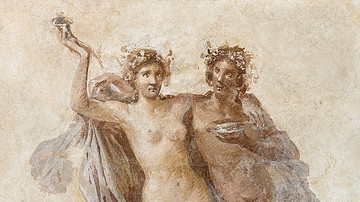
Image
Fresco of Dionysos and Ariadne, Getty Villa
Fresco Panel Depicting Dionysos and Ariadne, between 1 and 79 CE. Nude but for the drapery swirling around them, Bacchus and his consort Ariadne walk with arms entwined against a plain white background, as if floating. Ariadne lifts a...
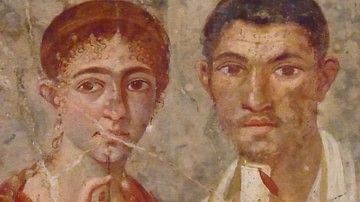
Image
Fresco, Pompeii
A Fresco (c. 60 CE) from the Roman town of Pompeii depicting Terentius Neo holding a scroll and his wife who holds a stylus and writing tablet. From the Villa di Guilia Felice. The villas of Pompeii were richly decorated with wall paintings...
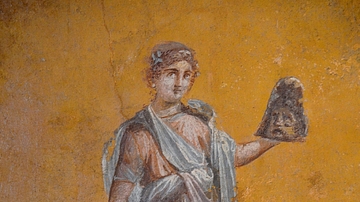
Image
Fresco with Melpomene
A fresco fragment depicting Melpomene, the Muse of Tragedy, from the House of Julia Felix in Pompeii, 62-79 CE. (now in Louvre Museum, Paris)

Image
Fresco Showing the Riot of 59 CE in the Amphitheatre of Pompeii
Fourth Style fresco depicting a riot that broke out in Pompeii in 59 CE during games held in the arena involving Pompeians and inhabitants of Nuceria. On the orders of Nero, this event led to the closure of the amphitheatre for ten years...
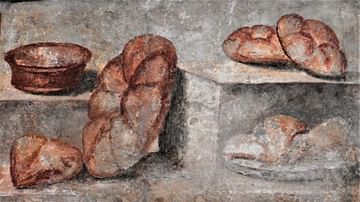
Image
Fresco of Panis Quadratus, or Panis Siligineus
A fresco from the House of Julia Felix in Pompeii, Italy. The fresco depicts different kinds of Roman breads, and is on display in the National Archaeological Museum of Naples.
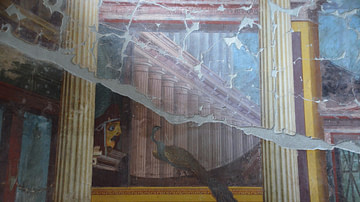
Image
Fresco with Theatre Mask and Peacock, Oplontis Villa Poppaea
Fresco in the Second Style showing a theatre mask, a peacock, and a perspective view of colonnades. The fresco decorates the east wall of the large oecus (room) of the Oplontis Villa Poppaea, Italy. 1st century BCE.
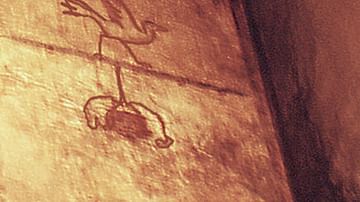
Image
Fresco of Bird and Dangling Grotesque Mask, Columbarium Vigna Codini 3
High up on the wall almost lost in the shadows above a loculus of this columbarium one can just make out the outlines of a bird walking on a flowered garland from which hangs a grotesque mask. The columbarium was excavated in 1852 CE. The...

Image
Fresco with Wounded Aeneas
Fresco depicting Iapyx removing an arrowhead from Aeneas' thigh. Venus stands over while beside Aeneas stands his young son Ascanius. 1st century CE (between 45 and 79 CE), from Pompeii. (Naples National Archaeological Museum).

Image
Fresco of a Statue of Mars, Pompeii
Mars, the Roman god of war, is painted standing on a plinth in this fresco from Pompeii. In a typical pose, he has a spear, shield and crested helmet. (House of Venus, Pompeii)